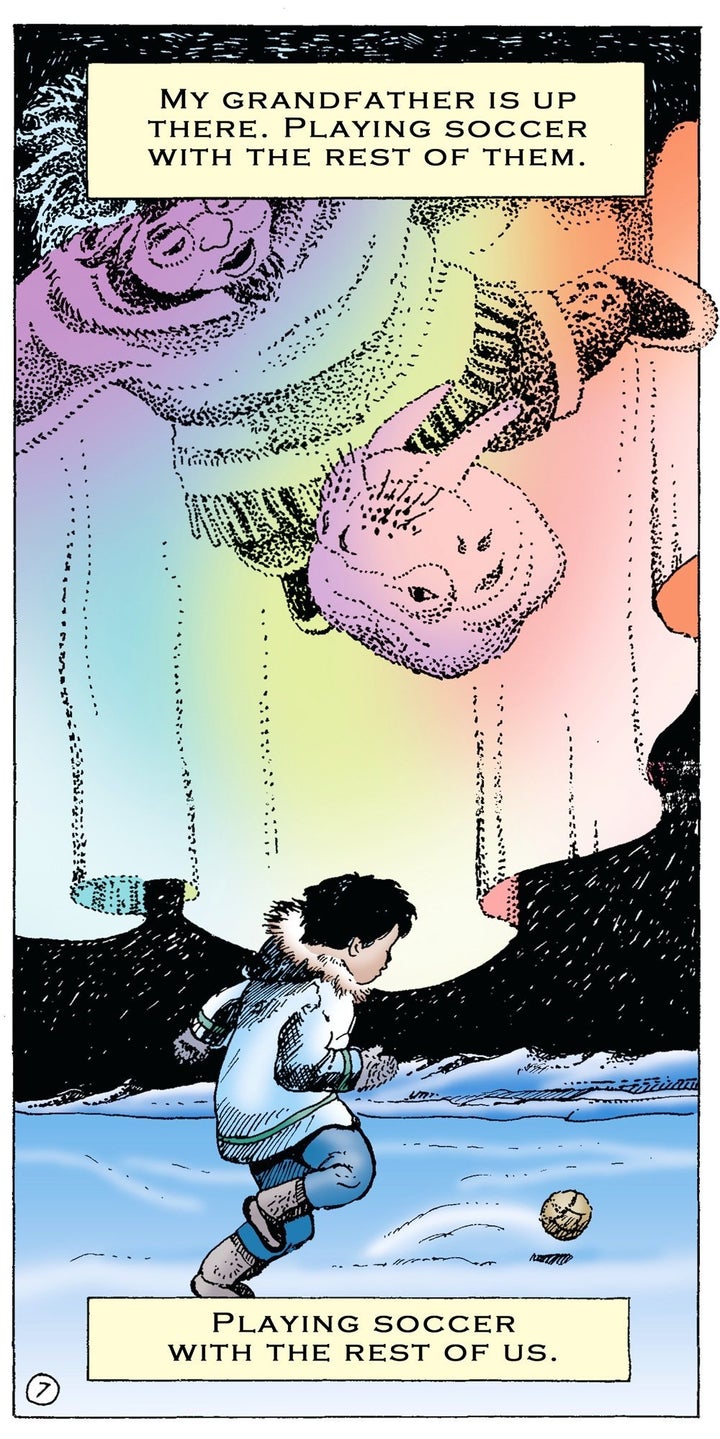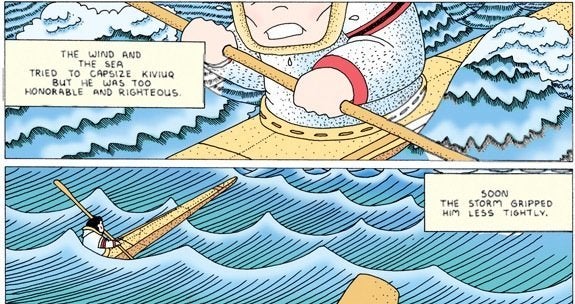
A comic book filled with myth, adventure and humor, written and illustrated by Inuit and northern Canadians, tells stories of the Far North – and quashes cliches.
The world was first introduced to Arctic Comics at Expo ’86, when Vancouver, Canada hosted the World’s Fair. Artist and storyteller Nicholas Burns, who had moved to Rankin Inlet, Nunavut a few years earlier, assembled the collection of tales of life in Canada’s far north for the Northwest Territories Pavilion. All 60,000 copies were snapped up. “There were lines around the block to get it,” he said.
Thirty years on, Burns has reopened the story vault to issue another edition of Arctic Comics. Like the first volume, the current anthology, published by Renegade Arts Entertainment, aims to entertain as it educates. “It’s all action and adventure,” Burns said.
The book’s target audience lies on both sides of the Arctic Circle. “People are drawn to pop-culture versions of their own culture,” he said. “But I also wanted to get people more aware of the Arctic, rather than the cliches of people living in igloos. There are stories of the past, stories of the present and a story about the future.”
Burns wrote three of the stories – Blizzard House, The Great Slo-Pitch Massacre and Film Nord – and worked with other writers and artists to complete the 80-page book.

Author Michael Kusugak, who wrote the children’s book A Promise is a Promise with Robert Munsch, adapted his poem “On Waiting” into a meditative story about an Inuk boy growing up in the north.
“When I was a little kid, I would take a .22 and go down to the beach and prop it up on a rock and wait until there was a seal close enough to shoot. You lie there and wait and wait and wait,” said Kusugak. “Your mind begins to wander.”
The story indulges the boy’s wandering mind as he thinks about the ocean, his grandfather and playing soccer on the sea ice with a ball made of caribou skin and stuffed with moss and fur. It all comes together as he dreams about the Northern Lights, which Inuit say are the souls of the dead playing soccer overhead.

Kusugak hopes the story will encourage readers to reflect on their surroundings more often. In On Waiting, the boy watches the tides go in and out, tiny waves lap the rocks and jellyfish come and go. “We don’t spend a lot of time just sitting and watching for hours and hours,” Kusugak said. “It’s a different experience than going somewhere and taking a picture.”
Kusugak also hopes the stories will dispel misconceptions about Inuit. “We were always portrayed as a very simple people who lived hand-to-mouth,” he said.
Michael’s brother, Jose Kusugak, who died in 2011, contributed a story about Kiviuq, a legendary Inuit shaman, to the book. “It’s a tale my grandmother told me when I was a little boy and would sleep in her igloo,” said Kusugak. Jose’s story diverges from the one Michael recalls hearing his grandmother tell. “Even in the same family, you remember stories differently,” he said.

Kusugak travels the world sharing Inuit stories. “When I tell a story, people say, ‘You should write that down so that it isn’t forgotten,’ but if you write it down and don’t tell the story, it gets forgotten anyway,” he said. “You have to go out and tell the story to keep it alive.”
During one trip to northern Quebec, Kusugak told the stories in the original Inuktitut language to audiences of adults and children.
“This old woman came walking in on a cane and carrying a pillow,” he said. “She set the pillow down in front of me and lay her head on it. She had her eyes closed the whole time and had a beautiful smile on her face. At the end she came up to me and said ‘Thank you, thank you. The priest came to my village when I was a girl and said we could never tell these stories again. I felt like a little girl again.’”
Arctic Comics mostly sets out to entertain, but Burns said comics can also teach their readers something new.
Decades ago, Burns used his talent for illustrated storytelling to create educational comics for younger audiences. In one, the Inuk superhero Super Shamou encouraged kids to stay in school. In another, Super Shamou discouraged solvent abuse. Burns found that the comic resonated with kids. “They said they weren’t going to sniff glue ‘because Super Shamou told me not to’,” he said.
Educational comics could also play a role in advancing reconciliation among Canadians, as outlined within the Truth and Reconciliation Commission of Canada’s Calls to Action. “One thing educational comics can do is present those issues in a less didactic way,” said Burns.
Burns would like to eventually publish Arctic Comics in Inuktitut. And he hopes that other books will follow. “There is no shortage of stories,” he said.
This article originally appeared on Arctic Deeply. For weekly updates about Arctic geopolitics, economy, and ecology, you can sign up to the Arctic Deeply email list